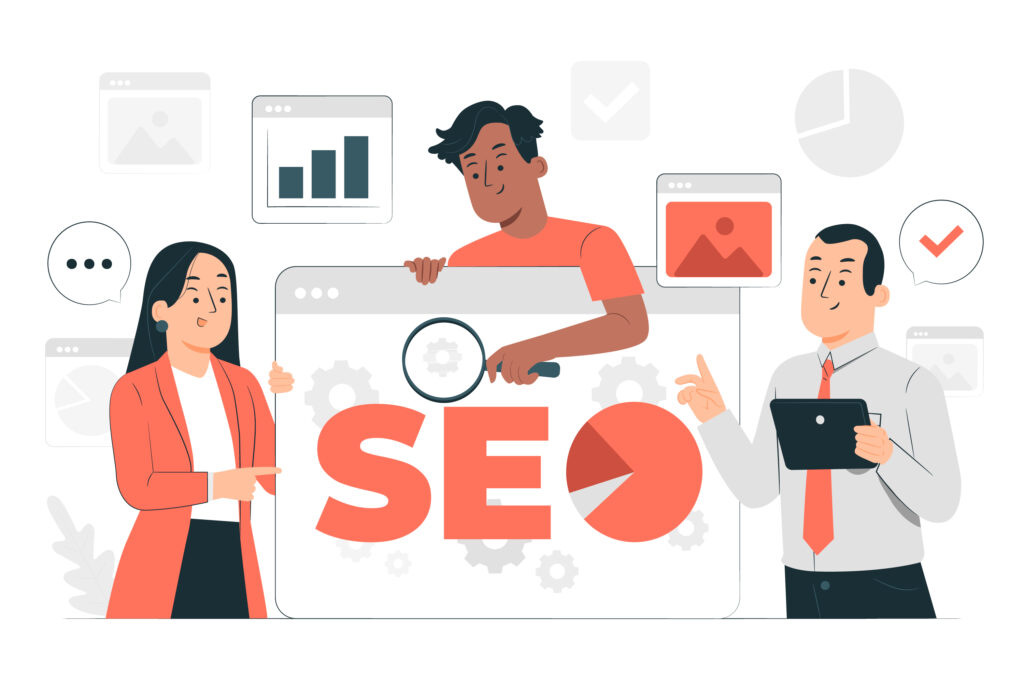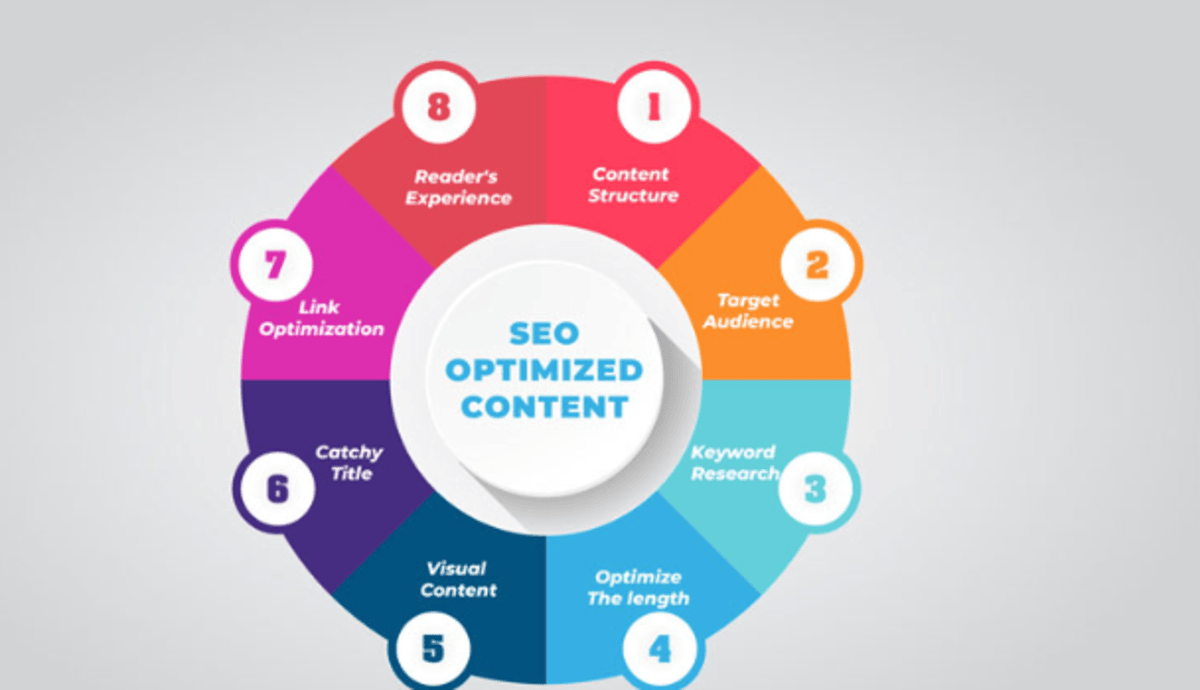Table of Contents
- Introduction to SEO Content Optimization
- Why is SEO Content Optimization Important?
- Key Elements of SEO Content Optimization
- Advanced SEO Content Optimization Techniques
- Common SEO Content Optimization Mistakes to Avoid
- Tools for SEO Content Optimization
- Measuring the Success of Your SEO Content Optimization
- Future Trends in SEO Content Optimization
- Conclusion
1. Introduction to SEO Content Optimization
SEO Optimization is the process of improving your website’s content to rank higher in search engine results pages (SERPs). It involves strategically using keywords, enhancing readability, optimizing technical elements, and ensuring your content meets user intent.
In today’s digital landscape, simply creating content isn’t enough. With millions of blogs and articles published daily, search engines prioritize content that is well-optimized, relevant, and valuable to users.
This guide will walk you through the best practices, techniques, and tools to optimize your content for SEO effectively.
2. Why is SEO Content Optimization Important?
SEO Optimization is crucial because:
- Improves Search Rankings: Well-optimized content ranks higher on Google and other search engines.
- Enhances User Experience: Structured, readable content keeps visitors engaged.
- Increases Organic Traffic: Higher rankings lead to more clicks and traffic.
- Boosts Conversions: Optimized content guides users toward desired actions (e.g., sign-ups, purchases).
- Builds Authority: High-quality, optimized content establishes your brand as an industry leader.
Without proper optimization, even the best content may go unnoticed.

3. Key Elements of SEO Content Optimization
A. Keyword Research
Keyword research is the foundation of SEO content optimization. It helps you understand what your audience is searching for.
Steps for Effective Keyword Research:
- Use Keyword Research Tools (Google Keyword Planner, Ahrefs, SEMrush).
- Analyze Search Intent (Informational, Navigational, Commercial, Transactional).
- Target Long-Tail Keywords (E.g., “best SEO content optimization techniques 2024”).
- Check Competitor Keywords (See what’s working for top-ranking pages).
B. On-Page SEO Optimization
On-page SEO ensures your content is structured for both users and search engines.
Best Practices:
- Use Keywords Naturally (Avoid keyword stuffing).
- Optimize Headings (H1, H2, H3) – Include primary and secondary keywords.
- URL Structure – Keep it short and keyword-rich (e.g.,
/seo-content-optimization). - Keyword Density – Maintain 1-2% keyword density.
C. Content Structure & Readability
Search engines favor content that is easy to read and well-organized.
Tips for Better Readability:
- Short Paragraphs & Bullet Points – Improves scanning.
- Use Subheadings – Breaks content into digestible sections.
- Simple Language – Aim for a 6th-8th grade reading level.
- Engaging Tone – Write conversationally.
D. Internal & External Linking
Linking boosts SEO by improving site structure and authority.
- Internal Links – Link to related pages on your site.
- External Links – Cite authoritative sources (e.g., Google, HubSpot).
- Anchor Text Optimization – Use descriptive keywords (e.g., “SEO best practices”).
E. Meta Tags & Descriptions
Meta tags influence click-through rates (CTR).
- Title Tag (Under 60 characters, include primary keyword).
- Meta Description (Under 160 characters, compelling and keyword-rich).

F. Image Optimization
Images enhance engagement but must be optimized.
- Compress Images (Use TinyPNG or ShortPixel).
- Use Alt Text (Describe images for SEO and accessibility).
- File Names (Use keywords, e.g.,
seo-content-optimization-tips.jpg).
G. Mobile-Friendliness
Google prioritizes mobile-friendly sites.
- Responsive Design – Ensures content adapts to all devices.
- Fast Loading Speed – Optimize images and use caching.
H. Content Freshness & Updates
Google prefers up-to-date content.
- Update Old Posts – Refresh statistics, links, and information.
- Add New Sections – Keep content relevant.
4. Advanced SEO Content Optimization Techniques
- Semantic SEO – Use related terms (LSI keywords) for context.
- Voice Search Optimization – Optimize for conversational queries.
- Schema Markup – Helps search engines understand content better.
- AI & Automation – Use tools like ChatGPT for content ideas.
5. Common SEO Content Optimization Mistakes to Avoid
❌ Keyword Stuffing – Overusing keywords unnaturally.
❌ Ignoring User Intent – Not aligning content with search purpose.
❌ Poor Readability – Long blocks of text without breaks.
❌ Duplicate Content – Copying content from other sources.
❌ Neglecting Meta Tags – Missing title tags & descriptions.
6. Tools for SEO Content Optimization
| Tool | Purpose |
|---|---|
| Google Keyword Planner | Keyword Research |
| Yoast SEO | On-Page SEO Analysis |
| Grammarly | Readability & Grammar Check |
| Ahrefs | Backlink & Competitor Analysis |
| Surfer SEO | Content Optimization |
7. Measuring the Success of Your SEO Content Optimization
Track performance using:
- Google Analytics (Traffic, bounce rate).
- Google Search Console (Impressions, CTR).
- Rank Tracking Tools (Monitor keyword positions).
8. Future Trends in SEO Content Optimization
- AI-Generated Content – More personalized and dynamic.
- Video SEO – Optimizing video content for search.
- E-A-T (Expertise, Authority, Trustworthiness) – Google’s focus on credibility.
9. Conclusion
SEO Content Optimization is an ongoing process that requires keyword research, on-page SEO, readability improvements, and technical enhancements. By following these best practices, you can improve rankings, drive organic traffic, and grow your online presence.
Start optimizing your content today and stay ahead of the competition!
Final SEO Checklist for This Blog Post
✅ Keyword Optimization – Primary & secondary keywords used naturally.
✅ Readability – Short paragraphs, bullet points, subheadings.
✅ Internal/External Links – Relevant links included.
✅ Meta Tags – SEO-friendly title and description.
✅ Image Optimization – Alt text and compressed images.
By implementing these strategies, your content will rank higher and attract more visitors. 🚀

युवा और महत्वाकांक्षी समाचार ब्लॉगर
मेरे समाचार ब्लॉग पर आपका स्वागत है! मैं आदर्श कनौजिया हूं, एक 18 वर्षीय ब्लॉगर जो पाठकों को नवीनतम और सबसे प्रासंगिक समाचारों से अवगत कराने के बारे में भावुक है। गुजरात (भारत) में जन्मे और पले-बढ़े, मैं सटीक, समय पर और आकर्षक समाचार सामग्री देने पर ध्यान केंद्रित करता हूं जो पाठकों को उनके आसपास की दुनिया से अपडेट रहने में मदद करता है।
वर्तमान घटनाओं से लेकर ब्रेकिंग स्टोरीज़ तक, मेरा ब्लॉग कवर करता है, यह सुनिश्चित करता है कि आपको अच्छी तरह से शोध और व्यावहारिक जानकारी प्राप्त हो। जब रिपोर्टिंग नहीं होती है, तो मैं उभरते रुझानों की खोज करने और आपके लिए महत्वपूर्ण समाचार लाने के लिए वक्र से आगे रहने में व्यस्त हूं।
सूचित और जागरूक रहने की इस गतिशील यात्रा में मुझसे जुड़ें!
मेरे साथ जुड़ने के लिए आपका धन्यवाद!
Discover more from News Factory1
Subscribe to get the latest posts sent to your email.

